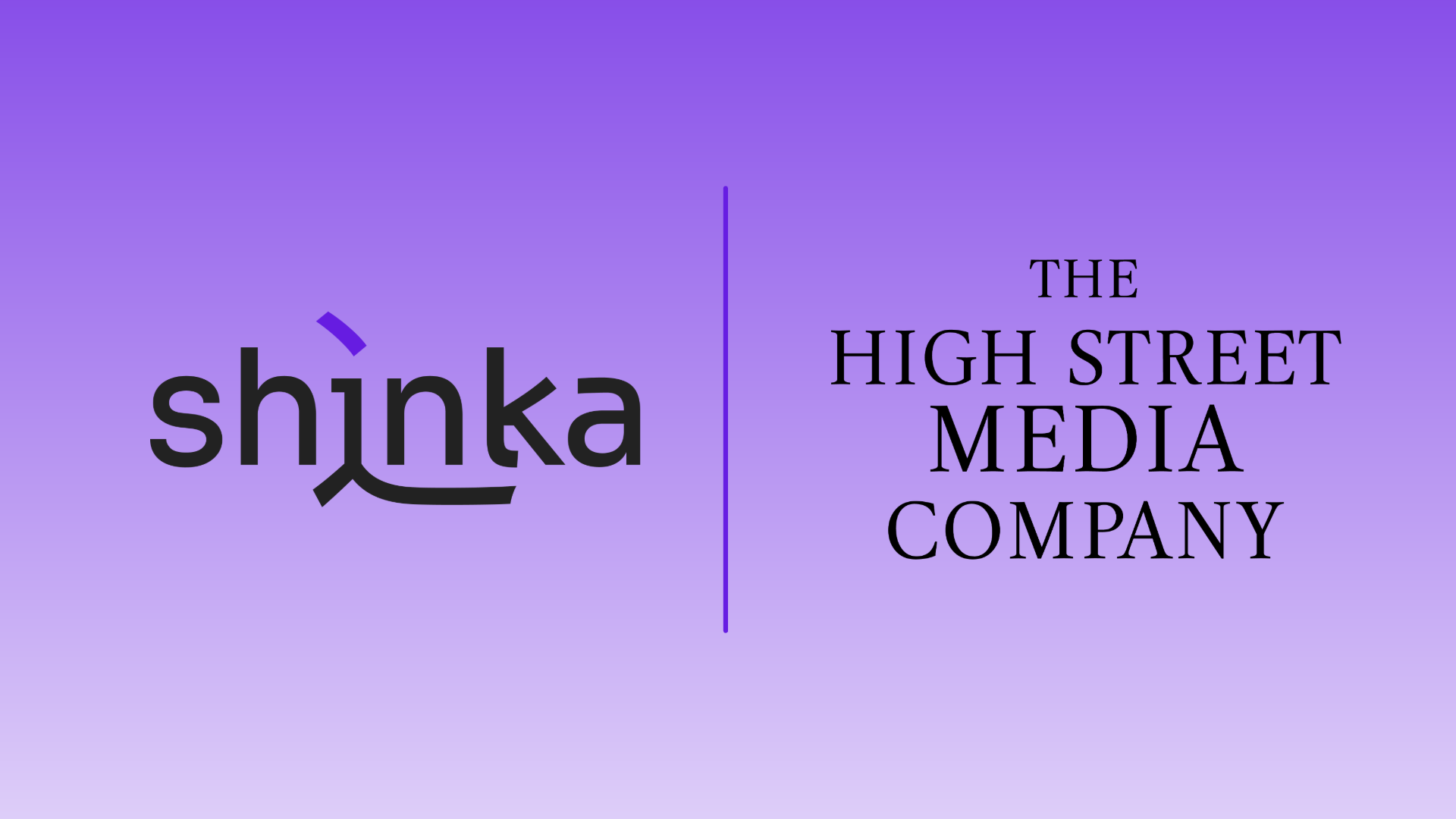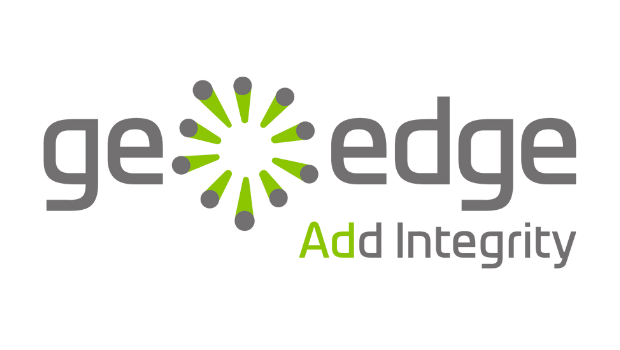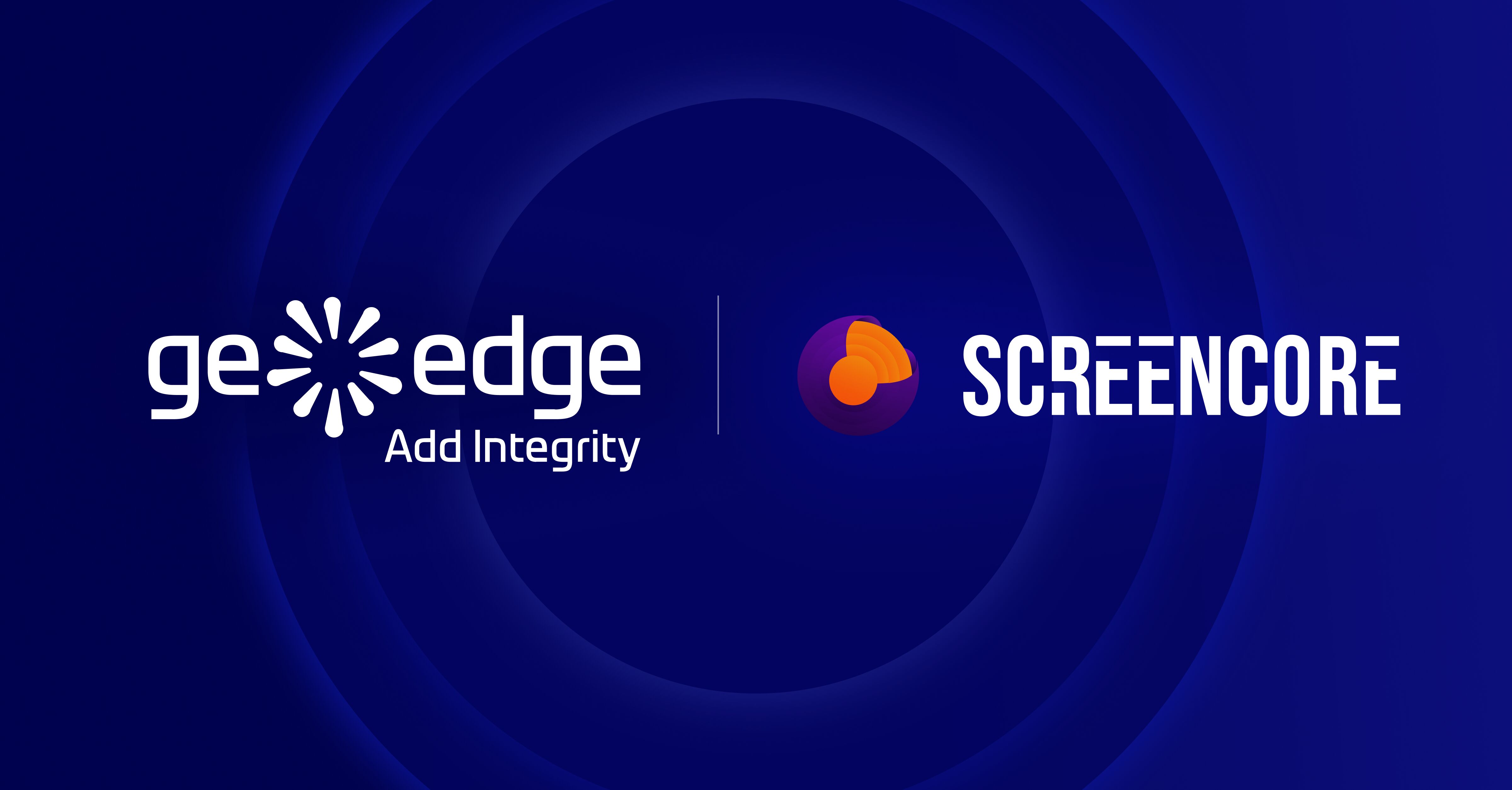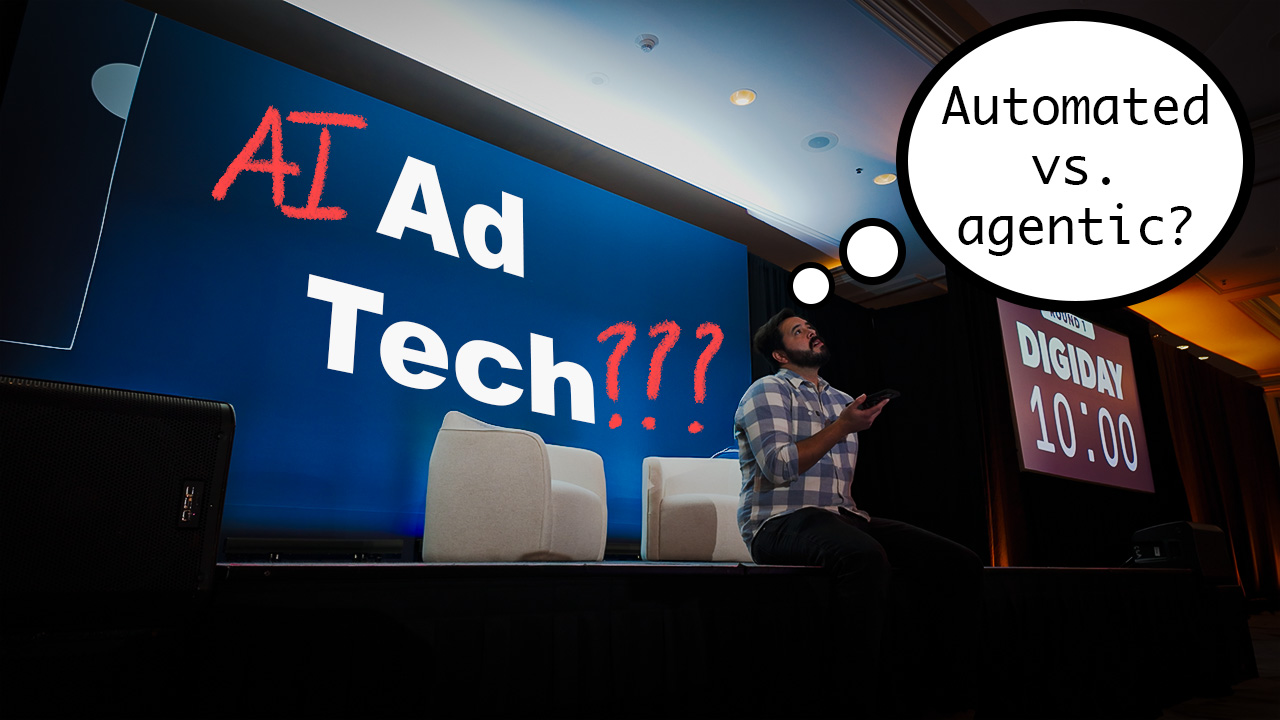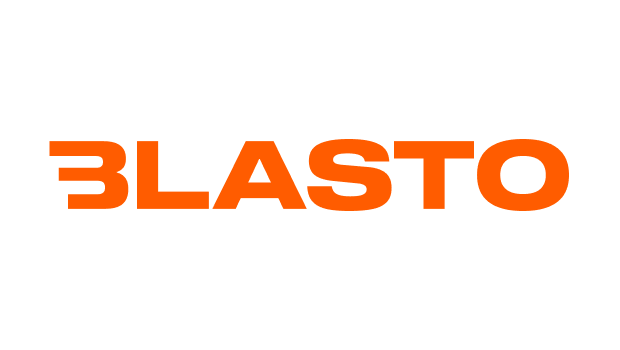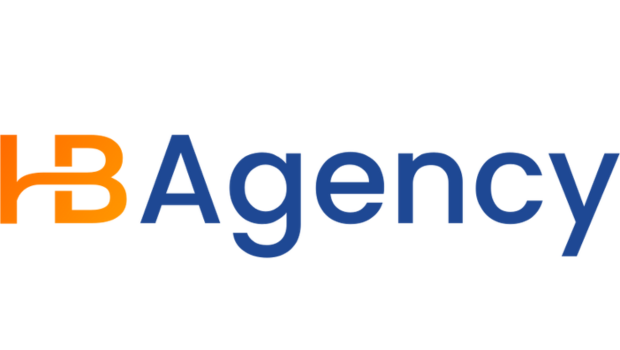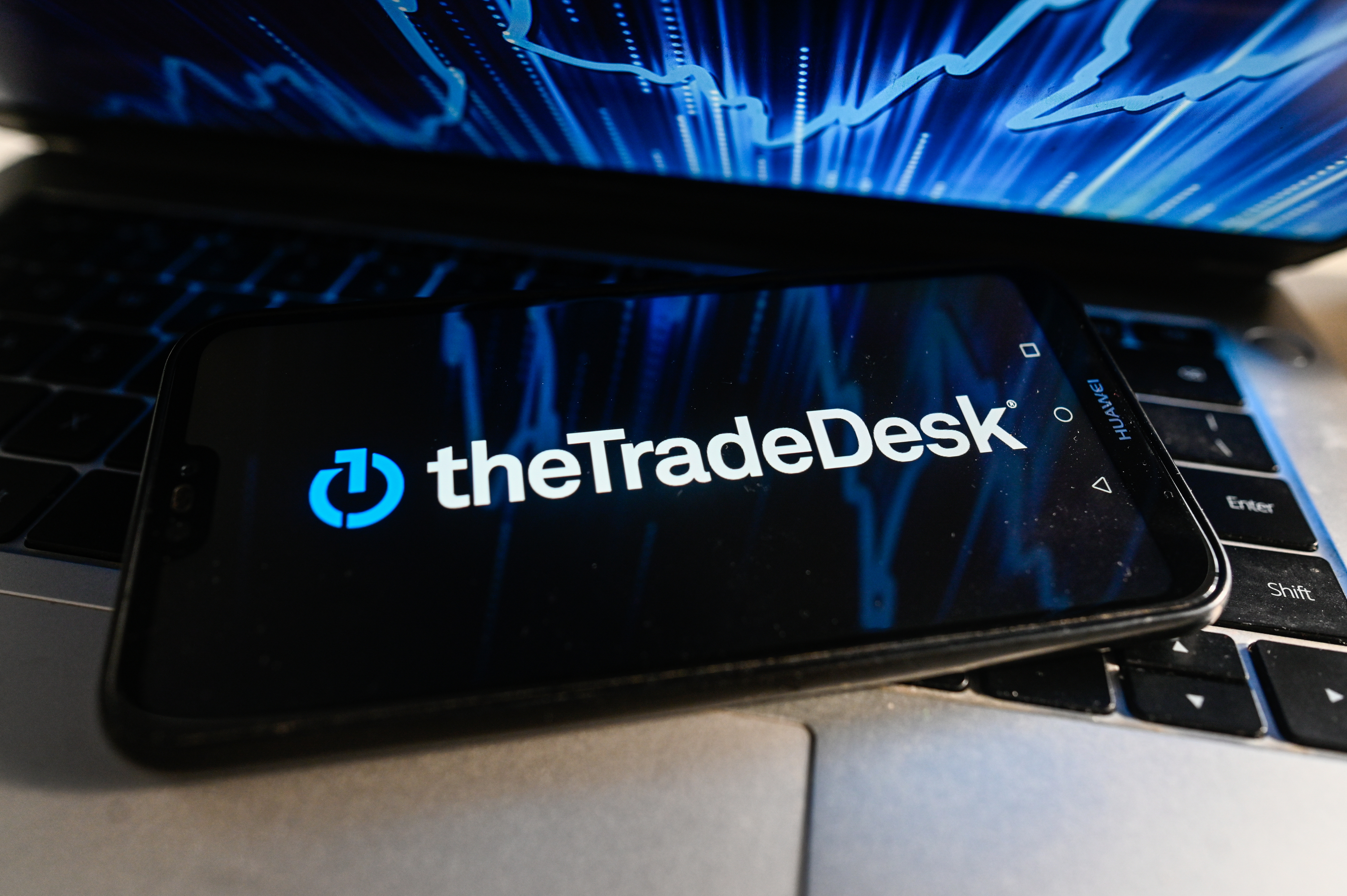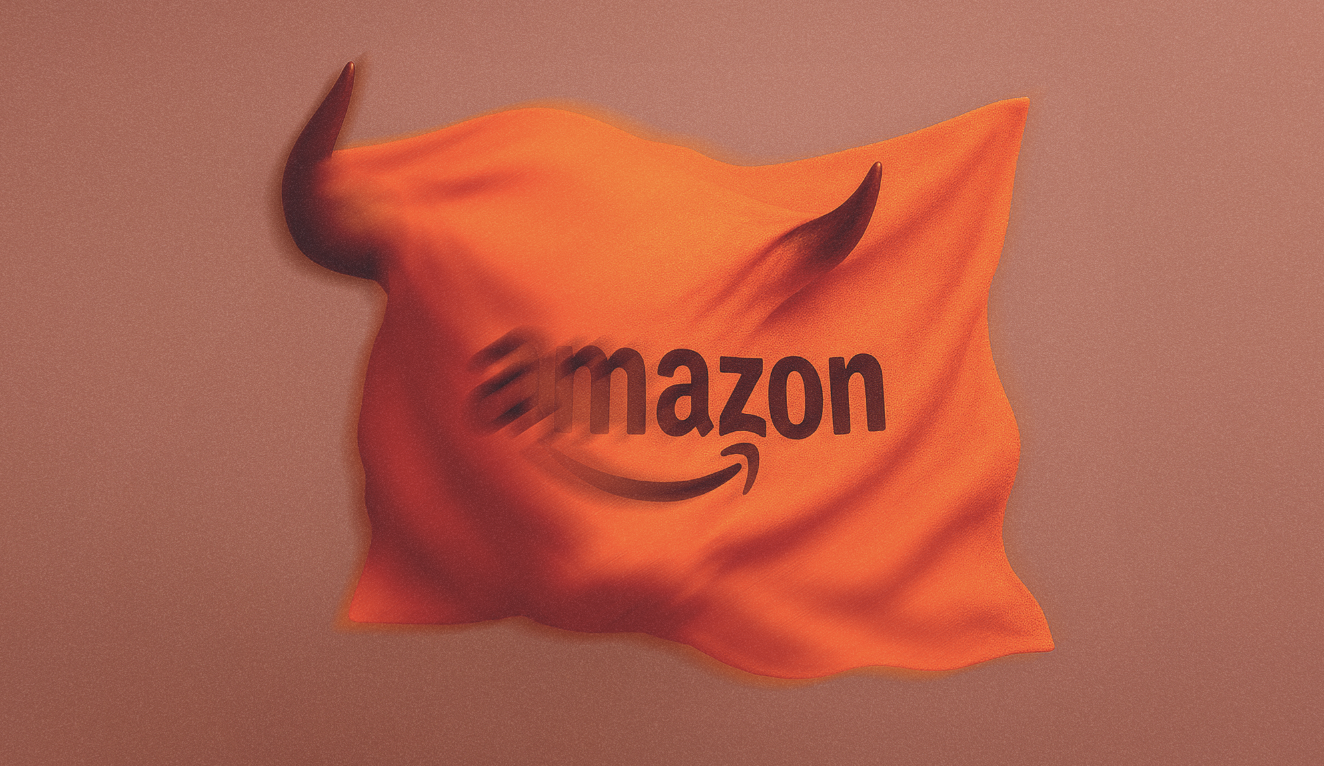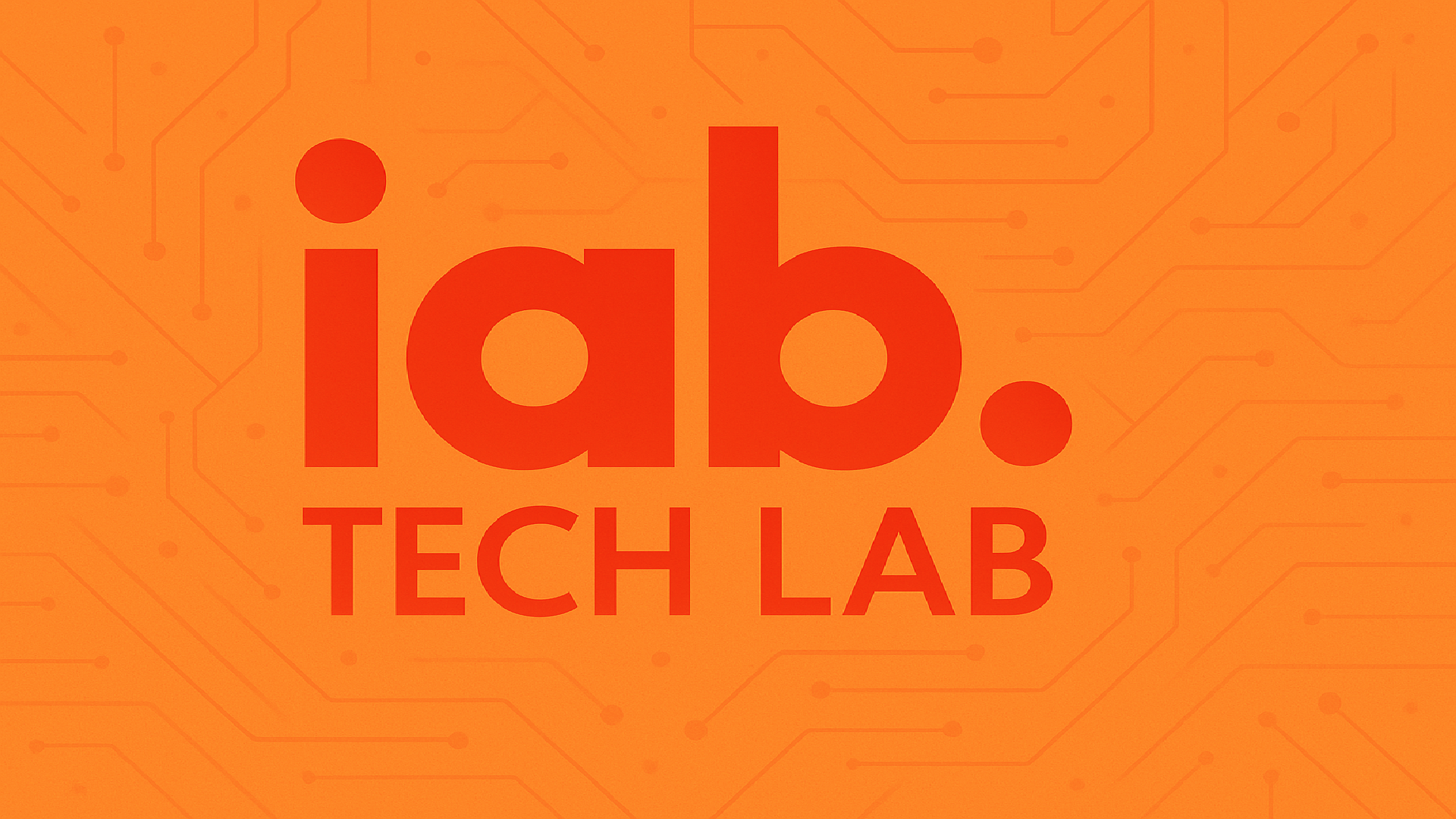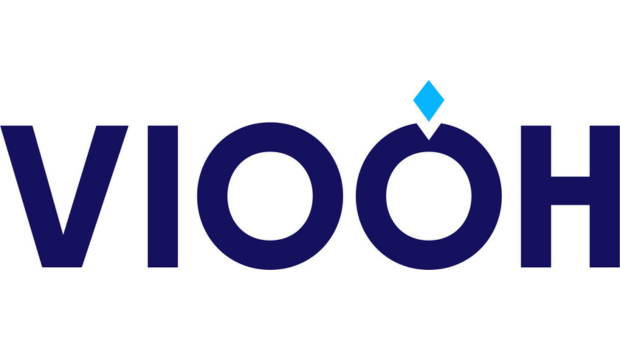#programmatic-advertising
#programmatic-advertising
[ follow ]
#the-trade-desk #ai-agents #transparency #agentic-ai #amazon-dsp #real-time-bidding #adtech #dooh #retail-media #ctv
fromThe Drum
21 hours agoProgrammatic comes of age with connected TV and OTT
And while some have been quick to declare the era of TV over, for the advertising industry this isn't the end of TV, rather an opportunity to bring together the benefits of TV and digital through programmatic technology. Programmatic gets a bad rep in the traditional TV stronghold of branding, but this is a chance to show programmatic can do more than just deliver performance metrics.
Television
fromDigiday
3 days agoProgrammatic agency execs speak out on CTV transparency
Has anyone seen any improvement in their CTV transparency in their buys at all, anywhere? Is it still just everyone's not getting any feedback of data, what episode you ran on [in] streaming, anything, no transparent pricing? Anyone found any solutions to address that other than yelling into the ether?
Marketing tech
Information security
fromExchangewire
1 week agoShinka Achieves SOC 2 Type I Certification, Strengthening Trust in CTV & DOOH Ad Tech
Shinka achieved SOC 2 Type I certification, validating enterprise-grade security and enabling faster partner onboarding, deeper SSP collaboration, and global expansion readiness.
fromExchangewire
1 week agoAdnami Unveils Agentic Curation, Enhancing Media Buying for the Attention Era
Adnami, a leader in attention-driven digital advertising, today (10th December, 2025) announced the launch of its Agentic Curation product to create custom publisher deals and optimise campaigns fast and at scale. After a year of success delivering curation services to global brands and agencies, Adnami now takes a big leap forward by adding an agentic layer to its programmatic activation and optimisation processes.
Marketing tech
fromDigiday
1 week agoAgencies push curation upstream, reclaiming control of the programmatic bidstream
Butler/Till is moving past this approach by pushing curation upstream, deciding what inventory should even be allowed into the auction rather than relying on DSP-side filters to clean things up downstream. That shift runs through SWYM.AI 's SelfCurate platform, which gives the agency's traders direct, self-serve control over supply before it reaches the DSP. Instead of bundling fixed lists they can dynamically score, filter and assemble inventory from a defined set of SSPs as campaigns run - producing a smaller, more intentional bidstream not because DSPs are being asked to "do better" but because fewer, higher-quality impressions are permitted into the marketplace to begin with.
Marketing tech
fromFast Company
1 week agoMaybe Spotify knows more about you than you do
The 2025 edition of Spotify Wrapped goes beyond just summarizing what you listened to with charts and infographics. This year, Spotify is also assigning each user a "Listening Age," which is based on the release years of their favorite tracks compared to others in the same age group. The feature quickly went rival, as users recoiled at their seemingly geriatric (or juvenile) musical tastes.
Marketing tech
Marketing tech
fromExchangewire
1 week agoAdform & RTL AdAlliance Partner to Promote Performance & Transparency for Programmatic Addressable TV Buying
Adform partners with RTL AdAlliance to enable programmatic ATV campaigns across European inventory, combining TV reach with digital targeting and cross-market audience solutions.
Artificial intelligence
fromDigiday
1 week agoMedia Buying Briefing: Overheard at DPMS - How agencies grapple with AI in programmatic
Generative and agentic AI in programmatic advertising offers efficiency but must be restricted from transactional decisions and require enhanced human training and oversight.
fromMarTech
2 weeks agoIAB Tech Lab proposes Deals API for programmatic advertising | MarTech
In a move that could clean up one of programmatic advertising's messier processes, IAB Tech Lab has released version 1.0 of its proposed Deals API for public comment. The new spec introduces a standardized way for supply-side platforms (SSPs) and demand-side platforms (DSPs) to sync deal data-cutting down on the manual errors that often derail private marketplace (PMP) transactions. The public comment period runs through the end of January,
Marketing tech
Artificial intelligence
fromAdExchanger
2 weeks agoAI Mode, Activate; The Trade Desk Bends On Agency Incentives | AdExchanger
Tech platforms push AI widely and report growing usage while pushing features; discounted ad deals reveal cutthroat DSP competition and AI content increasingly targets children.
fromDigiday
2 weeks agoDigiday+ Research: Where publisher revenue stands with ads, video, content licensing and subscriptions
Direct-sold ads remain the top revenue source for publishers, with 95% saying in Q3 2025 that they get at least a very small portion of their revenue from direct-sold ads and 56% saying they get a large or very large portion of revenue from this source. These percentages have remained steady over the last few years, according to Digiday's survey data, and lend themselves to how much publishers say they'll focus on growing this part of their business in the next six months:
Media industry
fromAdExchanger
3 weeks agoHow AudienceMix Is Mixing Up The Data Sales Business | AdExchanger
The data marketplaces powering programmatic advertising have exploded, with DSPs, SSPs and third-party platforms offering solutions for curating custom audiences. But, for marketers, combining data segments to reach their target audience can be a confusing and wasteful process. AudienceMix, a new curation startup, aims to make it more cost effective to mix and match different audience segments using only the data brands need to execute their campaigns. This helps mitigate wasteful overlaps between off-the-shelf audience segments.
Marketing tech
Marketing tech
fromExchangewire
4 weeks agoPicnic Launches The Age of Quality - A New Industry Guide Redefining How Advertisers Measure Success
Prioritizing high-quality ad inventory, attention, contextual relevance, and design drives substantially higher brand lift and sales uplift than low-quality environments.
Marketing tech
fromAdExchanger
4 weeks agoWall Street Wants To Know What The Programmatic Drama Is About | AdExchanger
Programmatic ad tech faces revenue declines and intensified competition over bidstream access, supply paths, and platform changes that have reduced DSP spending and supplier forecasts.
Marketing tech
fromThe Drum
4 weeks agoCome fly with B2B: why the next attention advantage is up in the air
In-flight advertising offers uniquely captive, focused audiences and programmatic targeting capabilities, enabling brands to connect travel moments into measurable, event- and route-specific campaigns.
fromThe Drum
1 month agoThe Trade Desk launches in India to tap into its digital advertising ecosystem
The Trade Desk, a leading technology company headquartered in the US, has unveiled its operations in India. Former Truecaller marketer Tejinder Gill has been hired as the company's India general manager to lead the business and growth strategy. Even as the India plan is being cobbled together, the programmatic advertising specialist company's chief exec and founder Jeff Green is also getting ready for the launch of its overhauled platform Solimar next month.
Marketing tech
Marketing tech
fromAdExchanger
1 month agoThe IAB Tech Lab Releases Its First Framework For Agentic Ad Buying Standards | AdExchanger
Containerization and multi-agent frameworks aim to reduce latency and enable agentic programmatic media buying by hosting buyer and seller code within shared infrastructure.
fromDigiday
1 month agoWhere agencies add value in Amazon's AI agent-led ad system
Amazon is following the same playbook Google and Meta have refined for years: automate more of the planning and buying that agencies once handled. But this isn't an overt bid to push them aside. It's to capture the long tail - the thousands of advertisers who were never going to hire a shop in the first place. That's the way Amazon ad execs are pitching a major overhaul to the way its ads business works this week: the DSP and Sponsored Ads console are being unified into a single Campaign Manager.
Marketing tech
fromAdExchanger
1 month agoHow PubMatic Countered A Big DSP's Spending Dip In Q3 (And Our Theory On Who It Was) | AdExchanger
Rajeev Goel, PubMatic's CEO and co-founder, demurred like a champ. He dismissed the "reseller" label as "noise" and pointed to PubMatic's recent collaboration with The Trade Desk on an API that helps publishers and advertisers share deal metadata between platforms in real time. "PubMatic is a platform for direct inventory monetization - reselling is not our business," Goel said. "We are a direct connection to publishers ... and I think it's pretty clear we provide value in ways that DSPs do not."
Marketing tech
fromAdExchanger
1 month agoEssilorLuxottica Leans Into AI To Avoid Ad Waste | AdExchanger
Inefficiency is baked into the programmatic supply chain. Between invalid traffic (IVT), bots, flawed targeting approaches that need to be adjusted midflight and ad tech taxes collected by middlemen along the way, brands spend a lot of money without seeing a return. But AI can help cut out some of this programmatic waste, said Caroline Proto, director of global media at EssilorLuxottica.
Marketing tech
Marketing tech
fromAdExchanger
1 month agoQ3: The Trade Desk Delivers On Financials, But Is Its Vision Fact Or Fantasy? | AdExchanger
The Trade Desk delivered solid Q3 revenue and profit growth but faces investor skepticism and must manage strained sell-side relationships as a dominant programmatic incumbent.
Marketing tech
fromExchangewire
1 month agoDoubleVerify Launches Industry-First Streaming TV Solutions to Improve Transparency and Elevate CTV Ad Quality
DoubleVerify launched industry-first streaming TV verification and AI-driven IMDb-based content classification to improve transparency, control, and reduce misplaced streaming ad spend.
Marketing tech
fromExchangewire
1 month agoDigest: Amazon Ads Expands Sports Streaming Inventory; Getty and Perplexity Ink Multi-Year Deal to Power AI Search Visuals
Amazon Ads integrates Premier Sports into its DSP, Getty Images licenses visuals to Perplexity for AI search, and UK broadcasters urge Big Tech crackdown.
Canada news
fromTipRanks Financial
1 month agoINEO Tech Corp. Expands Advertising Reach with Dolphin Digital Integration and Amends Loan Terms - TipRanks.com
INEO integrated with Dolphin Digital to expand programmatic access to its retail screen inventory and amended a $1,000,000 loan to improve financial flexibility.
fromAdExchanger
1 month agoThe Trade Desk And PubMatic Are Done Pretending Deal IDs Work | AdExchanger
One of the great myths of programmatic advertising is the illusion of algorithms replacing humans. In truth, the programmatic industry relies heavily on human relationships and handshake agreements. Nowhere is this more evident than with deal ID-based advertising. When programmatic campaigns run through private marketplace (PMP) deals or curation services, they typically come with deal IDs - think of them as digital handshakes.
Marketing tech
Marketing tech
fromDigiday
1 month agoAd Tech Briefing: IAB Tech Lab plans a 'Programmatic Governance Council' amid transparency rift
IAB Tech Lab will convene a Programmatic Governance Council to standardize data, bidding signals, and identifiers and improve transparency and auction integrity across programmatic advertising.
fromExchangewire
1 month agoAgentic Ad Tech: Writing the Rules
When AI is a bubble, and talking about AI being a bubble is a bubble ... what do you do? Right, you start talking about AI agents. And AI... agentic... what does it matter? Once you put out a new message, you quickly find a small group of people most likely to respond. You harvest that group fast, performance drops, you change the message, find a new cohort, repeat.
Marketing tech
fromDigiday
1 month agoThe great TID controversy takes another turn as Prebid moves to clarify its position
The latest flashpoint bubbled to the surface this summer when Prebid issued a change that rendered TID non-unique across exchanges, effectively undermining its primary purpose of helping buyers detect duplicate bid requests. The change was initially rolled out with little public notice, but concerns about governance and influence in open-source standards were soon raised - it's fair to say that since the August update, there's been much (public) spirited debate on the matter.
Marketing tech
Marketing tech
fromExchangewire
1 month agoMarkApp Partners with Zira to Elevate Creative Excellence in Programmatic Advertising
MarkApp partners with Zira to integrate rapid, subscription-based creative services into its Pantheon contextual ad platform, enhancing programmatic campaign creativity and scalability.
fromExchangewire
1 month agoOpenX Expands Leadership Team to Simplify Programmatic & Make Media Work Better for Buyers & Publishers
Technologies, Inc., one of the world's leading omnichannel supply-side platforms, today (23rd October, 2025) announced a strategic expansion of its leadership team, appointing five senior executives across product, marketing, communications, and operations. This expansion reflects OpenX's commitment to three core foundations: delivering transparent, high-quality inventory; driving innovation in data; and ensuring superior performance that directs more budget into working media. Together, these executives will help scale OpenXSelect™, the company's next-generation curation and supply-side targeting platform, simplifying the complexity of programmatic and making media work better for buyers and publishers alike.
Marketing tech
fromAdExchanger
1 month agoA Market Built On Mistrust: Why Disputes Like The Transaction ID Debacle Keep Rocking Ad Tech | AdExchanger
A healthy marketplace is a transparent marketplace Lack of transparency has been part of programmatic advertising nearly from the beginning. To understand this struggle, it's important to understand the early days of real-time bidding. Back in 2007-2008, I was an SVP and GM at MySpace (aka the Fox Audience Network, or FAN), which, at the time, had over 275 million global users and 60+ billion ad impressions a month.
Marketing tech
fromDigiday
1 month agoGoogle's AdX unit has begun striking deals with media agencies
Brands and media agencies rely on Google's Ad Exchange (AdX) unit to buy programmatic ads from a wide range of publishers. But they've never had much luck negotiating the rates on that ad inventory. Given AdX's dominant position in the marketplace, they might as well have been talking to a brick wall. Earlier this year, AdX execs opened a gap in that wall for the first time.
Marketing tech
[ Load more ]
